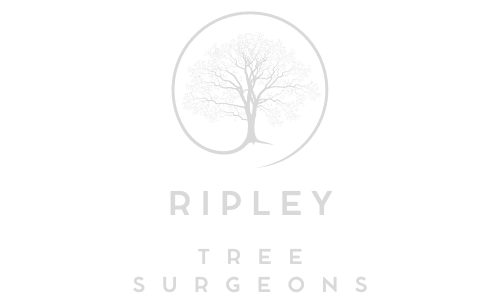Think Your Tree Is Fine? A Surgeon Might Think Otherwise
Introduction
Trees are often seen as the strong, silent type — towering, majestic, and seemingly self-sufficient. But beneath their leafy canopies, issues can lurk that aren’t visible to the untrained eye. Just because your tree looks healthy doesn’t mean all is well. Structural weaknesses, disease, and root problems can develop subtly, and by the time symptoms show, it may be too late.
At Ripley Tree Surgeons, we regularly assess trees in Ripley and the wider Derbyshire area that appear perfectly healthy on the surface but are hiding potentially dangerous defects. A professional inspection can reveal risks that homeowners and property managers might not spot, helping to prevent accidents, property damage, or costly removals in the future.
If you’re not quite sure whether your tree needs professional attention, here’s why it pays to take a closer look.
Why Trees May Appear Healthy When They’re Not
Hidden decay and structural weaknesses
Trees are experts at masking problems. Just like humans can carry an illness without showing symptoms, trees can be suffering from internal decay, root instability, or fungal infections while still producing leaves and flowers. Some of the most serious issues — such as internal rot or cracks in the trunk — are only visible through professional inspection.
Common hidden issues include:
- Cavities within the trunk or limbs
- Weak branch unions prone to splitting
- Root plate instability from underground decay
- Vascular diseases affecting nutrient transport
- Fungal infections not visible at ground level
Without proper care, these hidden issues can lead to falling limbs, uprooting, or complete collapse — especially during storms or heavy winds.
Subtle Warning Signs Most People Miss
Small clues that can point to bigger problems
Homeowners often overlook early symptoms simply because they don’t know what to look for. However, tree surgeons are trained to spot subtle warning signs that suggest deeper issues.
Look out for:
- Dead or dying branches in the canopy
- Unusual leaf drop or discolouration
- Cracks or splits in the trunk or large limbs
- Fungal growth near the base (e.g. brackets or mushrooms)
- Soil heaving around the roots or leaning trunks
- Bark peeling or falling off in large sections
At Ripley Tree Surgeons, we always recommend acting early. If you spot any of these signs — even if they seem minor — a professional evaluation can determine whether your tree poses a risk to your property or the public.
The Importance of Routine Tree Assessments
Prevention is better (and cheaper) than cure
Regular tree inspections aren’t just for major issues. They’re a key part of maintaining the health, safety, and longevity of your trees. Just as you’d service a boiler or inspect a roof, your trees deserve the same level of care.
Benefits of a professional tree inspection include:
- Identifying disease or infestation early
- Detecting structural weakness before failure
- Managing growth to avoid interference with buildings or power lines
- Protecting nearby plants or lawns from nutrient competition
- Ensuring compliance with local regulations and safety standards
Tree surgeons use specialist tools and techniques — from resistographs to climbing inspections — to assess trees properly. This detailed insight helps form a clear plan for pruning, bracing, or, in severe cases, safe removal.
When to Call in the Professionals
Timing can make all the difference
There’s no wrong time to get your trees inspected, but there are certain scenarios where it’s especially important to involve a professional:
- After strong winds or storms
- If you notice changes in tree shape or movement
- When planning construction or landscaping near trees
- If you’re managing an older tree with historical or visual importance
- When the tree overhangs buildings, roads, or play areas
At Ripley Tree Surgeons, we’re often called out after damage has already occurred — a large limb falling, a sudden lean, or a surprise fungus outbreak. A routine inspection could prevent these situations entirely.
Conclusion
Trees bring shade, structure, and beauty to your property — but assuming they’re healthy just because they look fine is a gamble. Subtle problems, structural weaknesses, and internal decay can all go unnoticed until the consequences become severe.
A qualified tree surgeon can identify these issues before they escalate, offering advice and action that protects both the tree and the surrounding area. At Ripley Tree Surgeons, we specialise in identifying risks early and providing tailored care plans for trees throughout Ripley and Derbyshire.
If you’ve been thinking, “My tree looks fine,” it might be time for a second opinion. Contact Ripley Tree Surgeons for a professional assessment — because a healthy-looking tree isn’t always a safe one.
Call us on: 01773 300 799
Click here to find out more about Ripley Tree Surgeons
Click here to complete our contact form and see how we can help with your trees needs.

